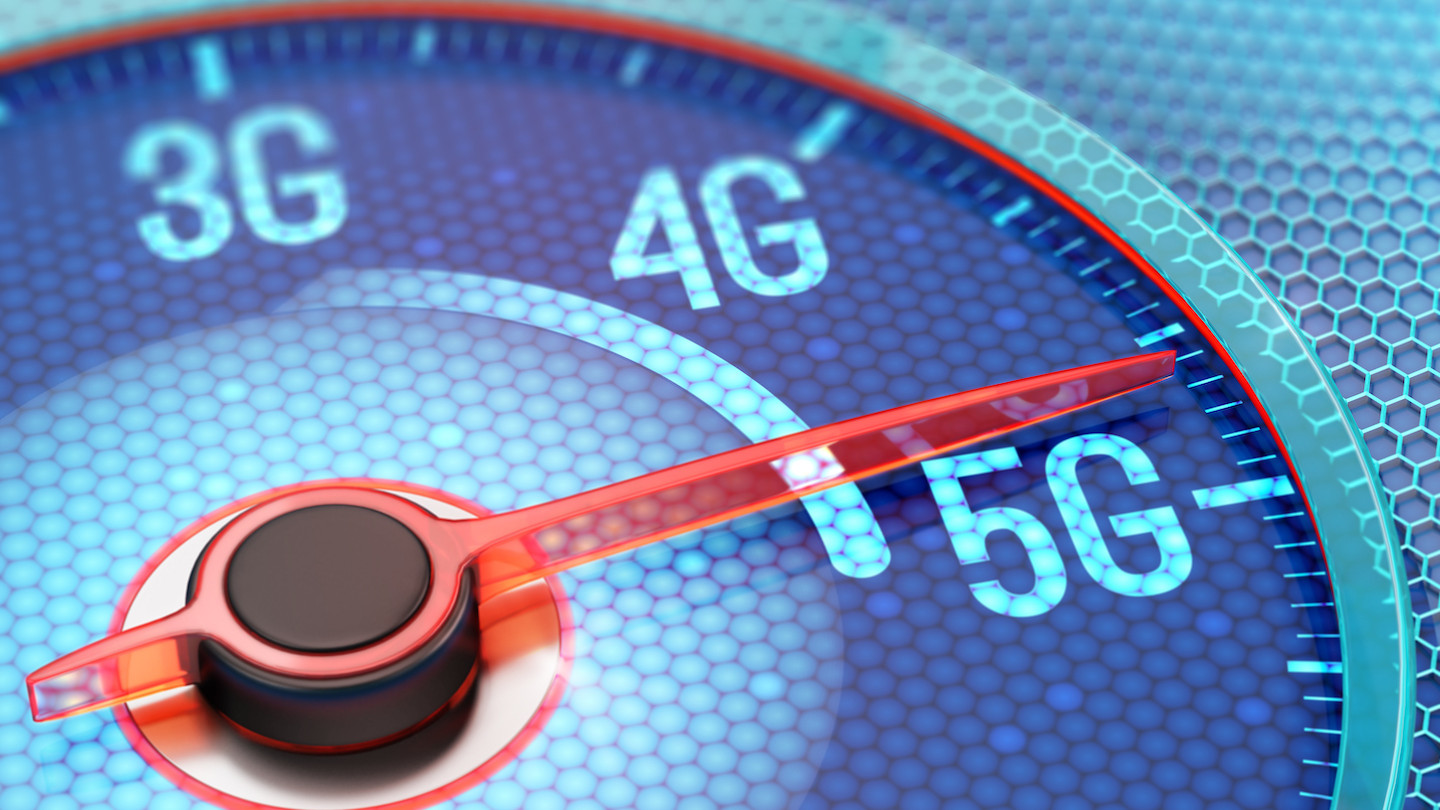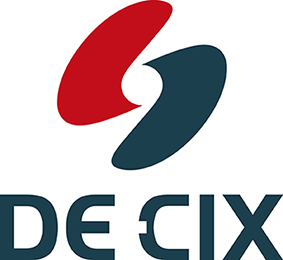5G: Much More Than Just “Ultrafast Internet” on the Smartphone – New Requirements for Industry of the Future
Dr. Christoph Dietzel from DE-CIX sheds light on interesting 5G use-cases from business and industry, and examines to what extent 5G will revolutionize industry.

© NirutiStock | istockphoto.com
Broad public awareness of the new mobile standard 5G will initially center on the much improved and faster transfer rates on smartphones. This is also where we know its predecessors from. But this is only one aspect of the technological revolution.
For end-consumers, the use of 5G is dependent on a range of requirements: Customers need a new mobile device, an appropriate provider, and – above all – need to live in a region where the coverage is guaranteed. Over and above this, users need to dig deeper into their pockets than previously. However, the actual challenge is availability and network coverage; those places that today still do not have a 4G network will in future also not have a 5G network. It is to be expected that mobile providers will initially concentrate their roll-out of the new standard in urban centers.
Naturally, 5G offers end-consumers a range of advantages. For instance, high-resolution videos can be viewed on the go without judder in 4K or 8K. 5G can also handle considerably more mobile devices, which means that the overloading of the network – for example, in conjunction with large events – can be avoided. But if we look at the economic and industrial potential, 5G is much more than simply a new mobile standard.
Behind the scenes, 5G incorporates a range of technical innovations. New modulation schemes and a new air interface allow considerably higher data transfer rates and increase the energy efficiency. The new standard also uses a considerably broader frequency band and copes with many more devices per mobile cell than its predecessor – this is taken care of by Massive MIMO, which uses substantially more antenna elements. With 5G, direct communication between devices is possible without the provider’s backbone, which is, for example, important for the communication between autonomous cars. As a result of these advantages, a range of use-cases are emerging for different economic branches:
Industry 4.0
Industry 4.0 and connected manufacturing plants are likely to be generally the best-known use-cases for 5G in business. Here, the focus is on areas like the simulation and virtualization of production processes, predictive maintenance, and error analysis. The massive use of sensors required for this makes data transfer via cable between machines impractical. If the data is processed before being sent, it also reduces the requirements for storage. A further field of application is mobile (transport) robots, which need to get around obstacles and avoid other robots and people.
Within an Industry 4.0 factory, the communication network needs to support a variety of applications. Each of these has its own individual requirements when it comes to latency, throughput, reliability, etc. Only in a heterogeneous communications environment will it be possible to fulfill all requirements at a reasonable price. Within the factory, both the WiFi-based IIoT (Industrial Internet of Things) and the cellular mobile network will remain, side by side. Mobile networks and WiFi are to carry the main load in wireless communication.
On the grounds of security, reliability, and performance, companies are likely to use their own base stations. The number of base stations can vary according to the size of the factory and the performance requirements. In an extreme case, the cell radius can be less than a meter, which necessitates the use of hundreds of bases. The costs of the base stations are reduced through the Cloud RAN concept. With Cloud RAN, the signal processing is outsourced to the mobile edge cloud (MEC). As a result, the computing occurs closer to the user, which prevents network overload, reduces latency, and therefore ultimately contributes to the better performance of applications. These base stations, also known as remote radio heads, are more like antennas. The unprocessed or partially processed baseband signal generates a significant amount of data traffic between the remote radio heads and the MEC.
Taking into consideration the high level of requirements for the communications connection, several companies are currently applying for their own mobile licenses in a dedicated frequency band. Having a separate frequency reduces interference with other communications devices and thus allows for an increased number of wireless devices. Furthermore, in Germany, for example, the use of these frequencies is regulated and subject to restrictions, so that companies can use “their” frequency exclusively.
Use Case Agriculture 4.0
Agriculture 4.0 uses information and communication technologies to improve the yields of crops. For example, data about weather and soil conditions can be collected by special sensors and then analyzed by self-learning algorithms to determine the right quantities of water, pesticide, and fertilizer for every single plant.
Sensors in the soil can deliver information about parameters like current moisture levels. To do this, the individual sensors are connected to a base station via LPWA technologies. A further area of application for 5G technologies is the automated control of agricultural machines. In this way, for example, an autonomous agricultural vehicle can follow a tractor. The vehicles can be synchronized with regards to speed and position.
On the basis of measurements, predictive maintenance promises to determine as precisely as possible when a machine component will malfunction. The component in question can then be replaced individually as needed, rather than simply on suspicion. In comparison to preventative maintenance, this approach promises to reduce machine downtimes, and in turn, maintenance costs.
For these applications, the database and software need to be kept in the vicinity of the farming machinery involved. This could be achieved with a nearby mobile edge cloud, for example in a mobile base station or together with a small base station directly on the machine. Agriculture 4.0 applications can be realized through individual operations or regions being equipped with an infrastructure for data collection, calculations, and storage. However, it is also conceivable that agricultural corporations will develop complete integrated solutions, from which farmers can purchase services.
Intelligent Energy Grid
The supply of power has been transformed in recent years – through the use of renewable energies like solar, wind, and biomass – from a few centralized power stations to a decentralized structure including small local generators. The introduction of 5G will place the energy sector in the position to build what are known as smart power grids. Smart grids offer improved monitoring possibilities and improved power distribution, because sectors can be decoupled from and re-connected to the main grid, which reduces the need for the inefficient and expensive transport of energy. New storage solutions with more efficient battery technologies – perhaps carbon-based – will offer the possibility to store electricity from renewable sources locally, and thus further reduce energy transport.
New technologies will also enable wireless communication in hard-to-access areas, and thus improve the provisioning, controlling, and coordination of load and power generation management within a local segment. These segments could potentially be self-sufficient part of the time, and could de-couple themselves from the main grid. Thanks to its low latency, 5G can also support error detection and debugging within these structures. A further application is the coordination of smart home devices. Load and generation prognoses can be used to increase the use of decentralized generation and reduce the losses caused by energy transport. Through the new communication possibility, diverse small generators can be interconnected dynamically to create virtual power plants.
Conclusion
Alongside the private use of mobiles, 5G technology offers many exciting use-cases in business and industry which have not previously been possible, such as the connection of countless devices, machines, and sensors in a factory.
However, the widespread use of 5G will also lead to growth in the total data volume in the Internet backbone. Therefore, we also need new approaches to data storage and processing.
Depending on the requirements, it will be necessary to undertake the data processing where the data is actually generated, to avoid unnecessary transport paths (edge computing). This is above all the case when especially low latency is needed. When this is not the case, the data can safely continue to be stored in data centers and distributed over the Internet. Besides, the question of profitability will arise: computing power “on the Edge” will be in short supply, and correspondingly expensive.
At any rate, it will not be possible to avoid the need to expand Internet Exchange Points (IXPs) outwards from the current few telecommunication hubs. If, in future, autonomous cars are to communicate with each other, we need Internet hubs in the vicinity of freeways. Another interesting question is to what extent these new IXPs and MECs can be integrated, so that edge computing could take place in these local communication hubs. If private company 5G islands are to exchange data and campus networks are to be connected with one another, then the necessary infrastructure must be provided – ultimately, companies want to be able to access information about all production plants directly from the central headquarters. Last but not least, every new 5G mast needs its own broadband connection. So the introduction of 5G has implications that go far beyond pure wireless communication.
Dr. Christoph Dietzel is Global Head of Products and Research at DE-CIX. Previously, he was a Head of the DE-CIX R&D team, and he has been responsible for several research initiatives, including numerous projects funded by the public sector (EU, German Federal Ministries). Chris gained his PhD at the Technische Universität Berlin and has published at various renowned conferences and for journals including ACM Sigcomm, ACM IMC, IEEE Communications Magazine, and IEEE Journal on Selected Areas in Communications.
His ongoing research interests focus on Internet measurements / security, routing, and traffic classification. Chris is also highly interested in IXP-related aspects of the Internet ecosystem.
Please note: The opinions expressed in Industry Insights published by dotmagazine are the author’s own and do not reflect the view of the publisher, eco – Association of the Internet Industry.





